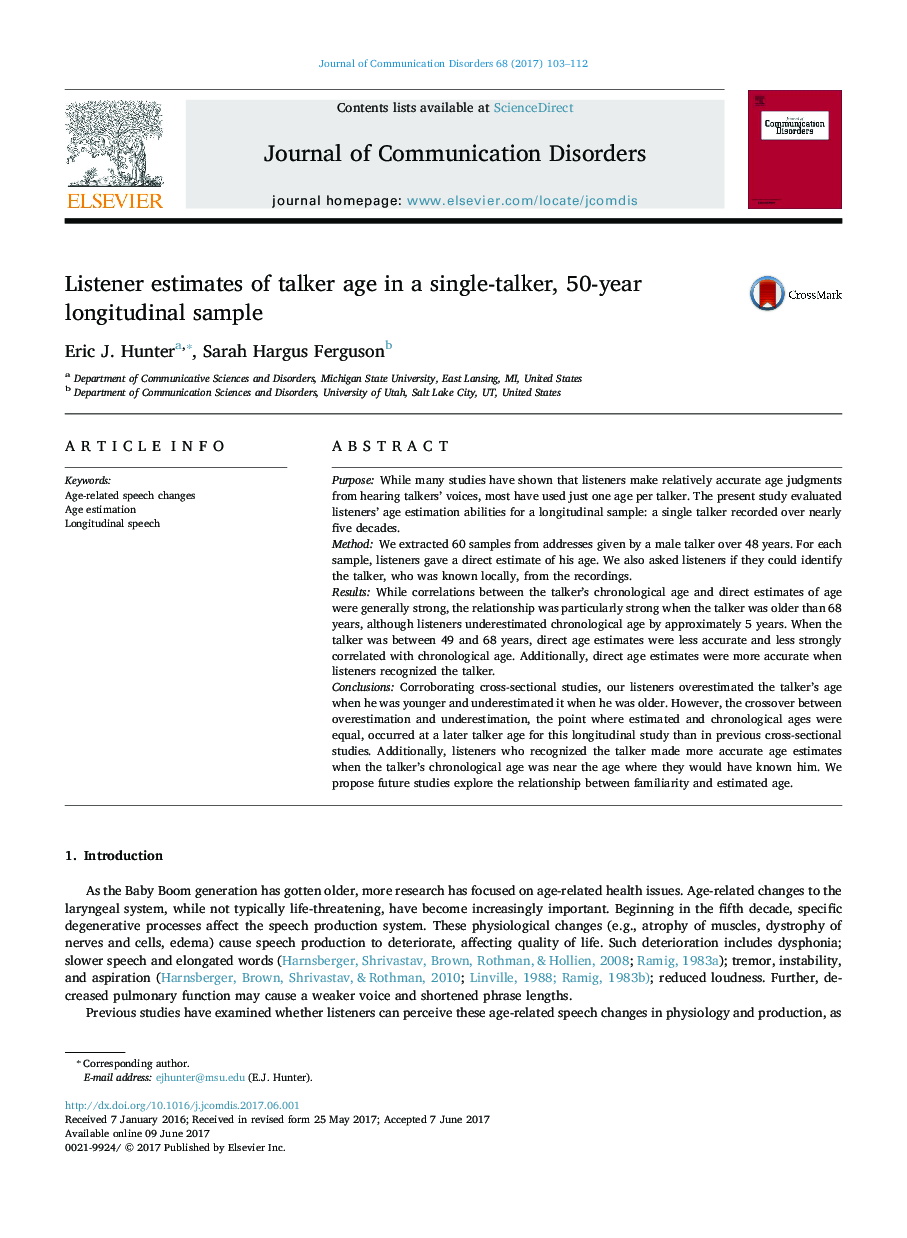| کد مقاله | کد نشریه | سال انتشار | مقاله انگلیسی | نسخه تمام متن |
|---|---|---|---|---|
| 5039119 | 1473088 | 2017 | 10 صفحه PDF | دانلود رایگان |
- Listeners estimated talker age for a 48-year single-talker longitudinal speech sample.
- Listeners overestimated age when talker was <68 and underestimated when he was >68.
- This pattern resembles that observed in previous cross-sectional studies.
- Listeners who recognized the talker were more accurate than listeners who did not.
PurposeWhile many studies have shown that listeners make relatively accurate age judgments from hearing talkers' voices, most have used just one age per talker. The present study evaluated listeners' age estimation abilities for a longitudinal sample: a single talker recorded over nearly five decades.MethodWe extracted 60 samples from addresses given by a male talker over 48 years. For each sample, listeners gave a direct estimate of his age. We also asked listeners if they could identify the talker, who was known locally, from the recordings.ResultsWhile correlations between the talker's chronological age and direct estimates of age were generally strong, the relationship was particularly strong when the talker was older than 68 years, although listeners underestimated chronological age by approximately 5 years. When the talker was between 49 and 68 years, direct age estimates were less accurate and less strongly correlated with chronological age. Additionally, direct age estimates were more accurate when listeners recognized the talker.ConclusionsCorroborating cross-sectional studies, our listeners overestimated the talker's age when he was younger and underestimated it when he was older. However, the crossover between overestimation and underestimation, the point where estimated and chronological ages were equal, occurred at a later talker age for this longitudinal study than in previous cross-sectional studies. Additionally, listeners who recognized the talker made more accurate age estimates when the talker's chronological age was near the age where they would have known him. We propose future studies explore the relationship between familiarity and estimated age.
Journal: Journal of Communication Disorders - Volume 68, July 2017, Pages 103-112
